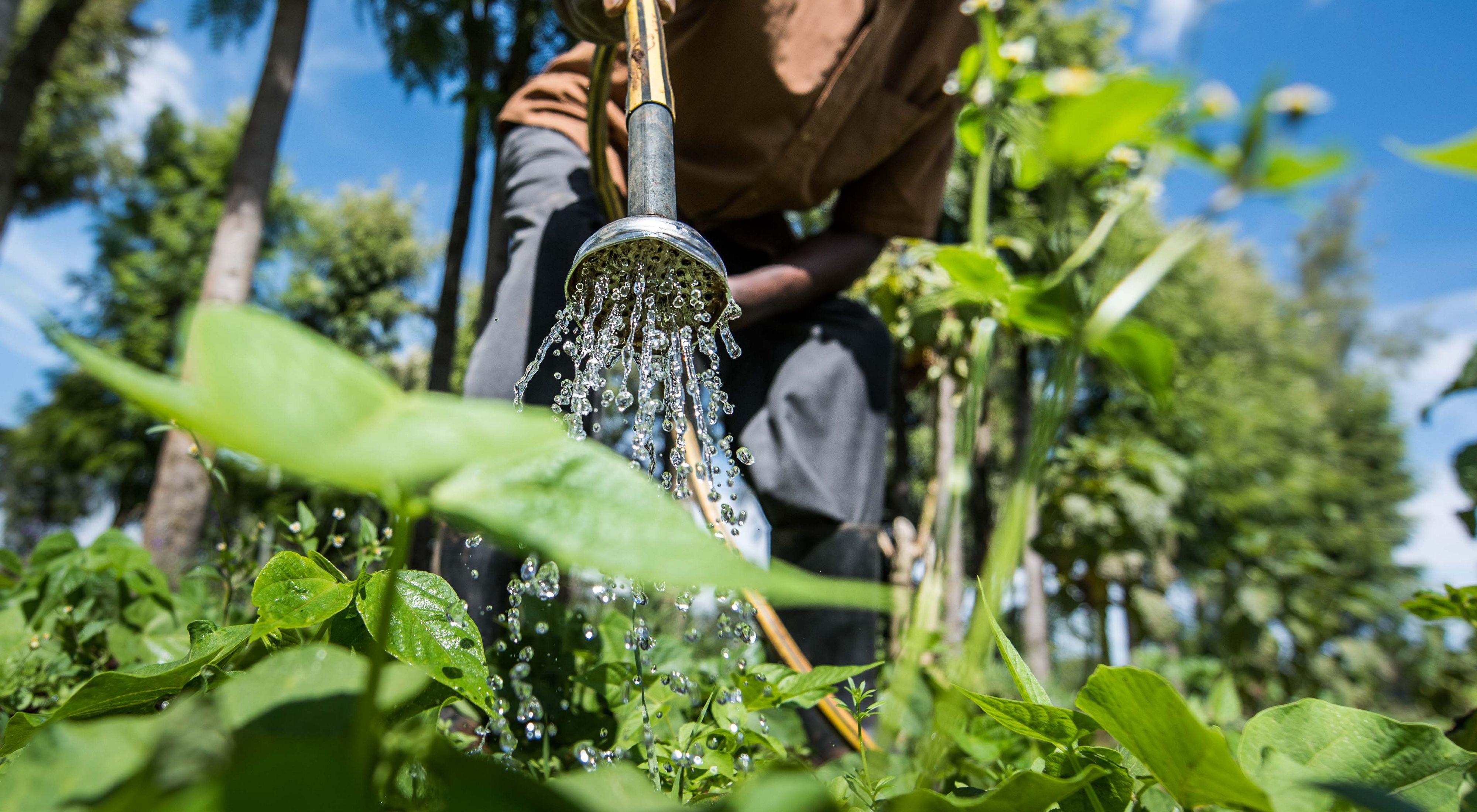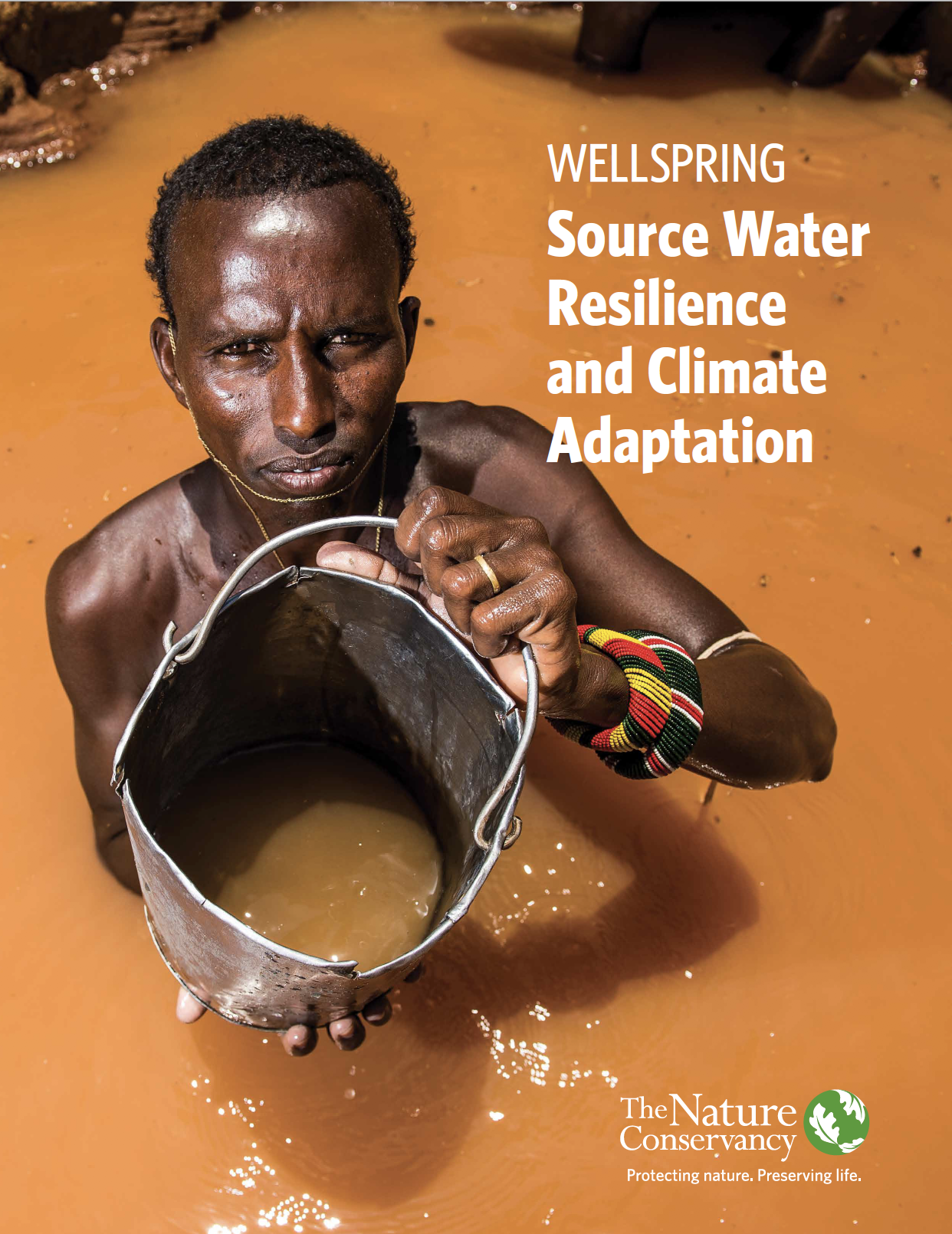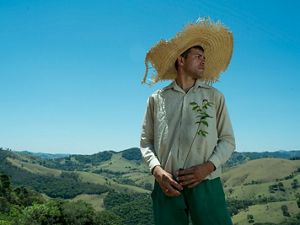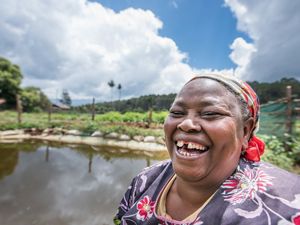Key Takeaways
A future shaped by climate change is one of uncertainty—and that's a problem for traditional water infrastructure.
"Gray" infrastructure can become obsolete as environmental conditions change, while nature-based solutions are often more adaptive and resilient.
Investing in source-water protection and other nature-based solutions helps ensure water security for communities even as the climate and landscapes around them change.
This article is adapted from "Providing Water Security in an Uncertain World," which originally ran on New Security Beat.
Although the twenty-first century has been characterized as a new era of uncertainty, there are two trends of which we can be fairly confident: accelerating growth of infrastructure and accelerating impacts from climate change. And there’s a big problem where those two trends intersect: most infrastructure isn’t designed to meet the demands of the increasingly volatile world climate change is producing.
What’s more, these concerns are playing out across highly complex global systems – at once economic, social and ecological in nature – that are becoming progressively more intertwined. Our modern landscape requires a reconceptualization of infrastructure’s demands and needs that often defies convention. And nowhere is an adaptive approach more crucial than in water infrastructure, where we are experiencing unprecedented changes in flows and increasing pressures on consumption.
Engineers typically base their projections for future needs, and thus their designs, on past events—the assumption being that future climate and hydrological conditions will be broadly similar to those of the past. But as climate change fundamentally reshapes our world, we can no longer rely upon those assumptions.
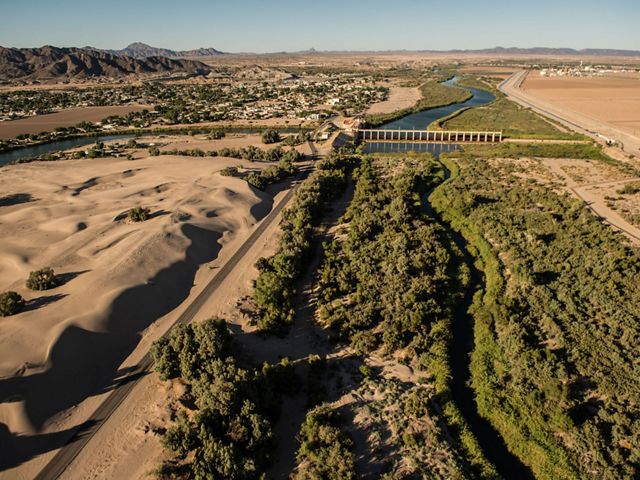
Across the southwestern United States, for example, the rising demand for water has coincided with prolonged periods of drought. Here, the increasing likelihood of the once-mighty Colorado River drying to a trickle illustrates the dangers of outdated infrastructure planning around watersheds. In order to provide for societies contending with greater agricultural needs and expanding cities, we must rethink our approach to long-term water security – we need resilient infrastructure that prioritizes ecological sustainability.
The quality and quantity of water flowing into thousands of growing cities around the world is directly dependent on the landscapes through which that water travels. Smart land management in the water basins surrounding a city can promote water filtration and produce cleaner, more reliable downstream flows—whereas deforestation, poor agricultural practices and other damaging forms of land use lead to impaired downstream water quality and flows.
Often, these systemic management challenges have been met through the installation of more gray infrastructure, including aqueducts, reservoirs and treatment plants. But even the most robust concrete solutions suffer a serious flaw in our new age of climate uncertainty: they are rigid and built to specifications that cannot flex or adapt to changing conditions.
In contrast, ecological sustainability updates traditional engineering thinking with an enlightened understanding of the importance of natural ecosystem services in crafting sustainable solutions for a world of high uncertainty and uncontrollability. If engineering sustainability is about robustness and optimization, ecological sustainability is about maintaining diversity and redundancy and managing connectivity. This systems approach is part of the building blocks of resilience –the ability to thrive in uncertainty.

Ecological sustainability relies on the use of source water protection (SWP)—the collective term for strategies such as watershed restoration that seek to repair and reinstate the capacity of natural landscapes to provide clean and reliable freshwater. SWP approaches are already benefiting millions of people around the world, from North America to Southeast Asia.
And restoring watersheds and ensuring source waters remain healthy will become even more important as climate change reshapes the world around us. Whereas traditional engineer solutions become obsolete or fail in the face of changing landscapes and flow regimes, nature-based solutions adapt to those changes; they are a part of that changing landscape.
Quote
The quality and quantity of water flowing into thousands of growing cities around the world is directly dependent on the landscapes through which that water travels.
The Ecology and Gender Based Flood Resilience Project in Hue City, Vietnam – funded by the Global Resilience Partnership and led by University of Potsdam – is a prime example of how natural resilience mechanisms can help communities and ecosystems thrive in the face of climate change. Hue City, home to approximately 350,000 people, is built around the Huong (Perfume) River, and a combination of rapid urbanization and climate change has changed the topology and hydrology of the river, leading to more extreme and unpredictable flooding.
In the past, Hue City had a number of lakes, rivers and man-made canals that helped absorb and drain flood waters, but many of these bodies of water had been blocked by construction and solid waste. The project team identified the restoration of natural retention and drainage areas as a key strategy for absorbing variable levels of rainfall and minimizing flood impacts.

But, crucially, the project also recognized the critical role of women in resilience building. Women play a principal role in securing food and water supplies for their families and communities in developing countries. In playing this role as central managers of natural resources, women have the knowledge and experience to build community resilience. Unfortunately, women commonly experience more social, cultural, economic, and political disadvantages that can result in higher mortality rates during floods; they also experience higher poverty rates after floods due to more unemployment and the lack of legal rights such as land ownership, as well as greater psychological stress during and after disasters stemming from their caretaker roles in the family.
The project team partnered with local organizations to focus on enabling women to lead the restoration, conservation and sustainable management of natural retention and drainage areas in Hue City. These bottom-up nature-based solutions provided a means to strengthen the role of women in disaster-risk reduction, climate change adaptation and source water protection.
The Hue City project is just one of many examples that demonstrate the extent to which we live in complex social-ecological systems where societies and economies are wholly dependent on healthy, functioning ecosystems—the two cannot be separated. SWP plays a critical role in helping to ensure that we safeguard those freshwater ecosystems upon which our livelihoods and lifestyles depend from damaging change. Wherever that that change comes from—climate change, increasing human development, or some other factor—perhaps the single most important goal is avoiding irreversible damage to the integrity of freshwater ecosystems.
A new paper, Wellspring: Source Water Resilience and Climate Adaptation, explores some of the ways in which practitioners can implement a new approach to SWP, which integrates enhanced resilience to sustain communities and ecosystems in a shifting climate.
Authored by experts from the Global Resilience Partnership, the Alliance for Global Water Adaptation and The Nature Conservancy, this paper distils lessons from our collective years of experience with SWP.
- Water must be treated as a dynamic asset associated with significant uncertainty for long-term management goals. For water managers, regulators, and natural resource managers, monitoring and evaluation processes should capture trends and shifts that mark new transitions, heralding new conditions. Any economic valuation of gray infrastructure benefits should reflect the uncertainties in quantity, quality, and timing and should consider sustainability over planning and operational lifetime scales, such as through lower discount rates. Financing should also consider long-term resilience criteria as well as ROI.
- Water resources should be viewed as an expression of climate, hydrology, and terrestrial and aquatic ecosystems. When possible, even localized projects should consider upstream-downstream impacts and interactions at catchment and basin scales as well as surface-groundwater interactions. System-level models should be used to help to assess and reduce climate-related risks through robust interventions.
- Source water protection is ultimately about integrating communities and human needs into a common management framework. Resilient, nature-based solutions, adaptation services, green and hybrid infrastructure, and green adaptation are all manifestations of the tools we have at our disposal. Yet, for these tools to be effective they must be combined with good governance that creates space for inclusive decision making, transparency and trust to enable a vision that links the current ecosystem and future adaptation services of ecosystems with poverty alleviation, economic growth and development, and shared resilience.
Resources
Global Insights
Check out our latest thinking and real-world solutions to some of the most complex challenges facing people and the planet today.
